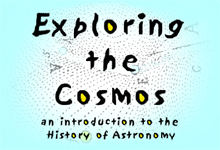

Department of History
University of California, Irvine
Instructor: Dr. Barbara J. Becker
![]()
Lecture 13. Star Stuff.
![]()
Early 19th-c Views on the Purpose of Astronomy |
Astronomy is not only the queen of sciences, but, in a stricter sense of the term, the only perfect science; -- the only branch of human knowledge in which particulars are completely subjugated to generals, effects to causes; ... an example of a science in that elevated state of flourishing maturity, in which all that remains is to determine with the extreme of accuracy the consequences of its rules....
|
|
In astronomy, human ingenuity will, probably, in future,
be able to accomplish little more than an improvement in the means of making
observations, or in the analysis by which the rules of computation are
investigated.
--John Narrien, An Historical Account of the Origin and Progess of Astronomy (1833) |
|
| We can imagine the possibility of determining the shapes of stars,
their distances, their sizes, and their movements; whereas there is no
means by which we will ever be able to examine their chemical composition,
their mineralogical structure, or especially, the nature of organisms that
live on their surfaces....
Our positive knowledge with respect to the stars is necessarily limited to their observed geometrical and mechanical behavior. --Auguste Comte, Cours de Philosophie Positive (1833) |
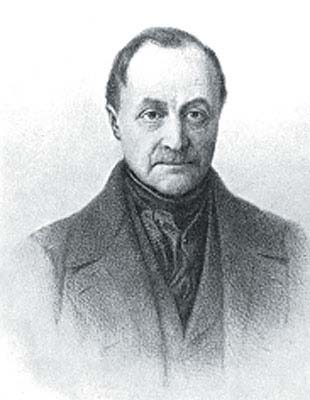
Auguste Comte (1798-1857) |
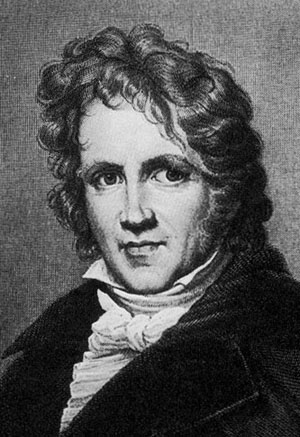
Friedrich Wilhelm Bessel (1784-1846) |
[Astronomy] must lay down the rules for determining the motions of
the heavenly bodies as they appear to us from the earth...
Everything else that can be learned about the heavenly bodies ... is not properly of astronomical interest. --Friedrich Wilhelm Bessel, "On the Present Day View of Astronomy" (1848) |
The Spectroscope |
Bessel's and Comte's restrictions did not constrain astronomers' investigative imagination. Excitement over the discovery of Neptune, for example, encouraged intensive and extensive study of binary stars' mutual interactions in order to measure their masses, distances, and intrinsic brightness. Astronomers searched for new asteroids and planetary satellites, noted changes on planetary surfaces, counted and mapped sunspots, and documented coincident solar and terrestrial phenomena. Some, like William Parsons (1800-1867), built telescopes of unparalleled size to gather more light and probe the heavens more deeply.
The 6-ft Leviathan of Parsonstown In the 1860s, a handful of individuals operating outside the boundaries of professional astronomy introduced a new instrument -- the spectroscope -- into the toolkit of astronomical research. They were attracted by the spectroscope's potential as a tool for analyzing the light of celestial bodies. By coupling it with the astronomical telescope, they not only appropriated an instrument of chemistry and physics, they adapted the attendant methods and theories of these disciplines to a new purpose: to uncover the stuff and structure of the stars, a line of inquiry long-considered to be beyond the scope of legitimate science. |
|
The spectroscope is a versatile and adaptable instrument consisting principally of a prism to disperse the light from a targeted source, a sighting telescope to observe the details of the resulting spectral display and a scale to mark and measure small angular displacements. In 1814, Joseph von Fraunhofer (1787-1826) developed the basic design of the spectroscope to study dispersive properties of different kinds of glass. He was a savvy young Bavarian optician and glassmaker who devised a reliable and efficient method of measuring with precision the refrangibility of individual rays emerging from a prism. Fraunhofer worked at the glassmaking arm of the Munich-based Mathematical-Mechanical Institute, a manufactory of achromatic sighting and surveying instruments Brought into the firm as a journeyman lensmaker in May 1806 after impressing its directors with his interest in and grasp of textbook optical theory, he advanced quickly by virtue of his uncommon ambition, ingenuity and skill. In August 1809, the Institute's directors ordered their premier glassmaker, Pierre Louis Guinand (1748-1824), to instruct Fraunhofer in the craft. Guinand was a talented Swiss artisan who had developed his own secret method of making homogeneous, unblemished optical glass, including a substitute for English flint glass, the highly prized and scarce commodity required for assembling achromatic lens systems. In September 1811, Fraunhofer was made director of optical glass production and effectively assumed responsibility for the entire Institute. For the next two years, he worked with Guinand to improve the quality and increase the quantity of optical glass produced. Fraunhofer eschewed Guinand's artisanal cut-and-try approach to problem solving. Instead, he developed a new, iterative product improvement process that married creative artisanal tinkering with the humdrum routine of methodical testing. Putting the ideals of textbook optical theory into practice in this way left little, if anything, to chance. To limit the variables in his investigations, Fraunhofer first looked for a source of monochromatic light. Filtering sunlight through coloured liquids and glass yielded unsatisfactory results. He met with more success examining the dispersed light emitted by coloured flames. To see the detail in these spectra, Fraunhofer used the sighting telescope of a surveyor's repeating theodolite. As one of the Institute's principal products, the theodolite was a natural instrument to repurpose in order to conduct his optical experiments.
Fraunhofer was disappointed to find that each colored flame produced a spectrum composed of a broad range of colours rather than the monochromatic signature he needed. But his attention was drawn to a bright and sharply defined orange streak that appeared to be common to all flame spectra. Some time in late 1813, he began a long series of painstaking experiments. In them, he directed narrowly constricted beams of light from six carefully arranged sodium lamps through a prism. The result was an array of six differently colored spots of light that he was able to observe from a distance of some 225 m. Instead of trying to observe the spots directly with his unaided eye, Fraunhofer looked at them with the telescope of a modified theodolite. He measured and remeasured their apparent positions using the bright orange streak in the lamps' light as a convenient calibrator. In the spring of 1814, Fraunhofer began searching for the orange streak in sunlight. Instead, he found a closely-spaced pair of dark lines in that region of the solar spectrum. Indeed, closer inspection revealed the solar spectrum to be interrupted by "innumerable" dark lines of varying widths and intensities. Fraunhofer mapped the relative positions of 574 of these lines, labeling selected reference lines with a simple alphabetic system. He assigned "A" to a line near the red end of the spectrum, "D" to the pair of dark lines associated with the bright orange streak he had observed in flame spectra, "H" to a line near the end of the visible violet and "I" to a line in the ultraviolet. |

Fraunhofer studied celestial light sources other than the Sun. He worried that light rays from an extended light source would be "inflected" (diffracted or bent) as they passed by the edge of the aperture. Fearing the change in the rays' direction might influence the appearance of the spectral lines, he sought a bright and steady point source of light that he could examine without the need for an intervening aperture. He turned to Venus and several bright stars -- not out of any astronomical interest in these bodies, but to have the opportunity to examine diffraction-free spectra. Fraunhofer noted that the spectrum of Venus contained lines identical to those in sunlight, but that stellar spectra exhibited greater variation. In fact, he conjectured that each star's spectrum was unique. Fraunhofer's lines intrigued practitioners and theorists alike for over forty years after the publication of his spectral maps. It was a wonderful puzzle that encouraged, rather than stifled, their speculation on the mechanism behind the lines' appearance. Although they assumed some kind of absorption process was at work, they could not identify with certainty the absorbing agent or explain the why and how of its narrow selectivity. Chemists adapted the spectroscope for use in identifying the chemical makeup of unknown substances. |
|
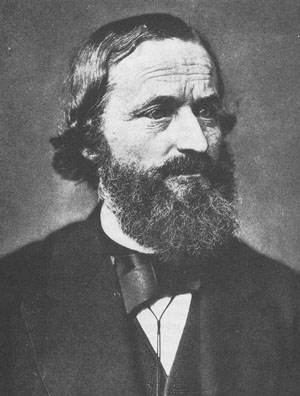
Gustav Kirchhoff (1828-1887) |
German chemist, Robert Bunsen (1811-1899) and physicist Gustav Kirchhoff
(1824-1887) studied the flame and spark spectra of light generated by highly
purified samples of various salts. They believed their observations
confirmed what physical scientists had long suspected, namely, that an
individual metal produces its own characteristic pattern of bright spectral
lines when it is burned.
Kirchhoff made additional observations of the solar spectrum formed after sunlight had passed through a flame containing table salt. He concluded that the dark Fraunhofer lines in the Sun's spectrum "exist in consequence of the presence, in the incandescent atmosphere of the sun, of those substances which in the spectrum of a flame produce bright lines at the same place". |
On 20 October 1859, Kirchhoff presented a paper to the Berlin Academy on the Fraunhofer lines in which he offered both a chemical interpretation and a hint of a physical explanation to account for them. News of Kirchhoff's claim spread quickly throughout the scientific world via professional journals, personal correspondence and word-of-mouth.
Bunsen and Kirchhoff's spectroscope, Philosophical Magazine 22 (1861) |
|
|
By October 1860 one would have been hard-pressed to identify a physicist, chemist, or optical instrument maker who had not heard something about Kirchhoff's discovery. Bunsen's former student Henry Roscoe (1833-1915), now Professor of Chemistry at Owens College in Manchester, was probably one of the first in England to become aware of it and it did not take him long to recognize the implications of this research. He wrote to George Gabriel Stokes (1819-1903) in February 1860:
Three weeks later, Roscoe wrote Stokes again:
Illustration from Roscoe's Spectrum Analysis (1869) The hue and cry in popular lectures and journal articles about the validity of Kirchhoff's explanation for the Fraunhofer lines, coupled with Roscoe's enthusiastic proselytizing, kept it before the public eye long enough to be assimilated into a wider investigative context.
|
|
The physicist and the chemist have brought before us a means of analysis that ... if we were to go to the sun, and to bring away some portions of it and analyze them in our laboratories, we could not examine them more accurately than we can by this new mode of spectrum analysis. --Warren De La Rue (1861) |
Astronomical or cosmical physics ... is full of the audacities, the inconsistencies,
the imperfections, the possibilities of youth.... It promises everything;
it has already performed much; it will doubtless perform much more.
--Agnes Mary Clerke (1885) |
Pioneers in Stellar Spectroscopy |
|
|
|
Of all the early celestial spectroscopists, the one individual who did the most to shape the emerging disciplinary boundaries of astrophysics was English amateur astronomer, William Huggins. Although his name is largely unfamiliar to modern ears, he was celebrated in his own lifetime as a self-taught pioneer who played a key role in introducing spectrum analysis into astronomical work. Huggins was the first to observe emission lines in the spectra of nebulae, the first to apply Christian Doppler's (1803-53) principle to a star's light in order to determine its motion along the line of sight, the first to suggest a plausible method of observing solar prominences out of eclipse and the first to identify the ultraviolet spectral lines of hydrogen on film. He served as president of the Royal Astronomical Society, the British Association for the Advancement of Science and the Royal Society of London, and he reaped many awards and honors for his scientific contributions, including honorary degrees from Cambridge, Oxford, St. Andrews, Edinburgh, Dublin and Leyden. He received the Royal Society's Rumford, Royal and Copley Medals, the Académie des Sciences' Lalande prize, and joined the ranks of those elect few in the history of the RAS to be chosen twice as the recipient of that society's prestigious Gold Medal. In 1871, the enlightened Emperor of Brazil, Pedro II (1825-91), bestowed on him the Order of the Rose. In 1897, he was knighted by Queen Victoria (1819-1901) and five years later, he was selected to be among the first twelve individuals awarded the prestigious Order of Merit by King Edward VII (1841-1910). He achieved all this with little formal education and no professional or university training in science or mathematics. Huggins began his career on the periphery of scientific London where he had ample opportunity to interact with astronomers, chemists, physicists, mathematicians and instrument makers of all stripes.
Title page from William Huggins' first observatory notebook (Wellesley College). Huggins authored numerous articles documenting his ground-breaking use of the spectroscope to analyse the light of celestial bodies. Most notable among them was a retrospective essay -- "The New Astronomy" -- in which he laid out in painstaking detail each step of his discovery-laden career. "The New Astronomy" exemplifies what some have called the "scientist's account": an uncomplicated story of a scientific community's origins that both legitimates the work of its past and present researchers, and socialises its new recruits. Constructed with tautological clarity, these synthetic narratives reduce the muddle of theoretical and experimental options that really confronted the community's early researchers to a set of clear-cut alternatives. To take narratives like the "The New Astronomy" at face value is to fall into an alluring trap. Like deftly embroidered curtains, they delight their intended audience while keeping the embarrassing clutter of regrettable missteps and frustrating reversals out of sight, out of mind and ultimately out of the collective's memory. By masking, even deleting from the record, the complexities and uncertainties that mark the first forays into a new realm of scientific investigation, they diminish the role played by calculated risk, negotiation and persuasion in establishing it as a valid branch of scientific inquiry. |
|
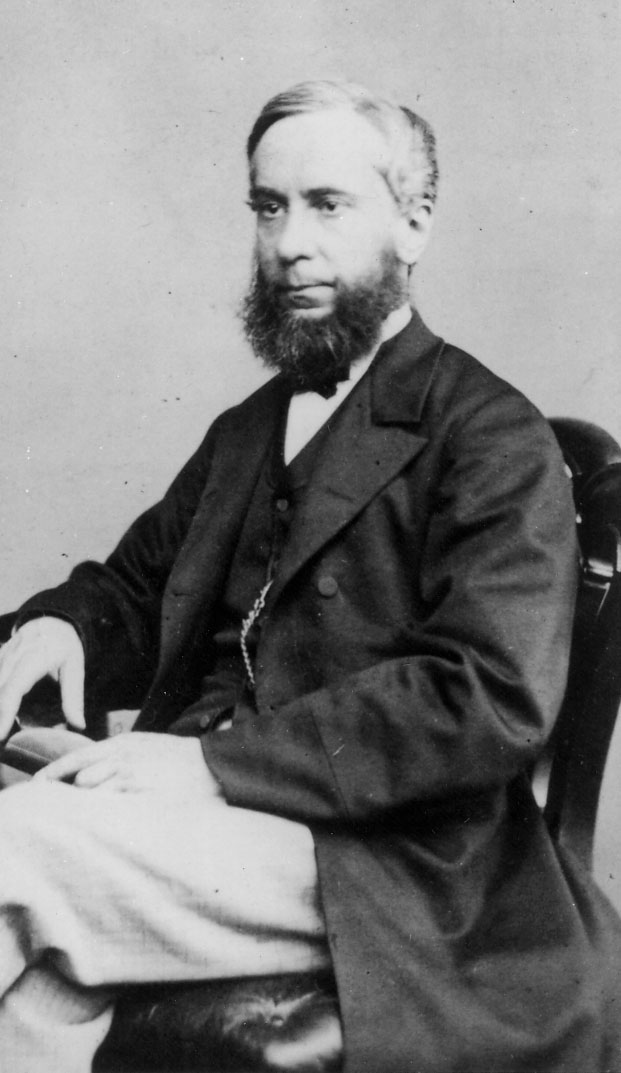
William Huggins |
I soon became a little dissatisfied with the routine character of ordinary
astronomical work, and in a vague way sought about in my mind for the possibility
of research upon the heavens in a new direction or by new methods.
It was just about this time ... that the news reached me of Kirchhoff's great discovery of the true nature and the chemical constitution of the sun from his interpretation of the Fraunhofer lines. This news was to me like the coming upon a spring of water in a dry and thirsty land. Here at last presented itself the very order of work for which in an indefinite way I was looking.... --William Huggins (1897) |
"Then it was that an astronomical observatory began, for the first time, to take on the appearance of a laboratory." --Huggins (1897)
William Huggins's star-spectroscope
|
|
|
the Nova in Corona Borealis (1866)
"The view in the spectroscope was strange, and up to that time unprecedented."--Huggins (1897) |
|